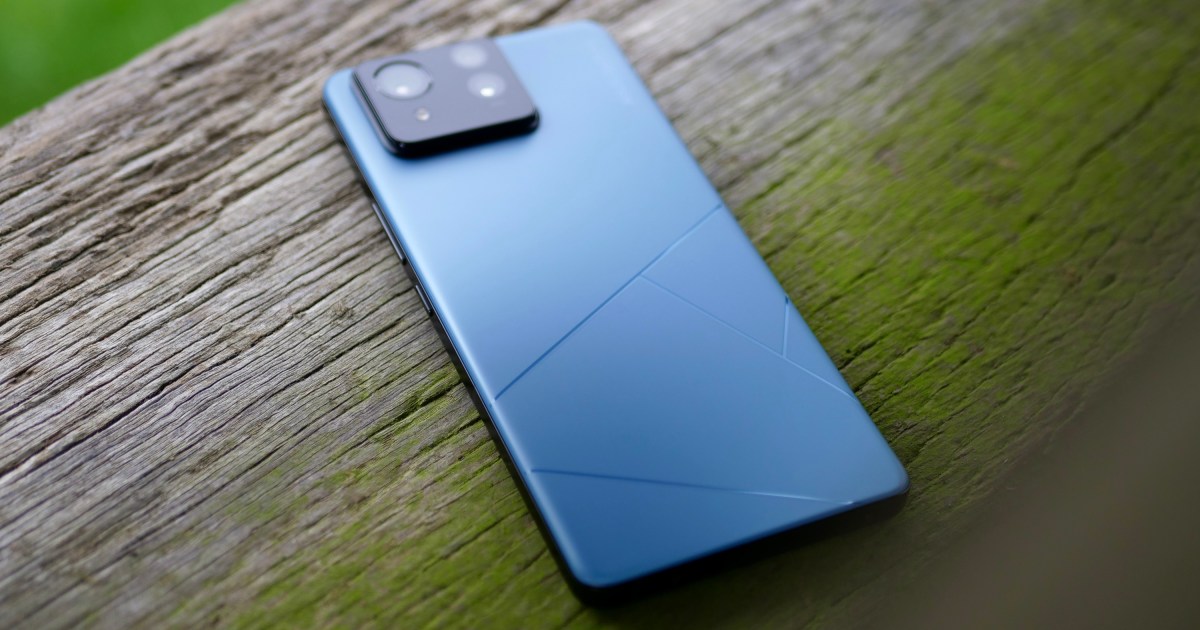
Asus Zenfone 11 Ultra
MSRP $899.00
“The Asus Zenfone 11 Ultra is an unremarkable big-screen smartphone that doesn’t do anything wrong, but is eclipsed by the stronger competition.”
Pros
- Clean, fast software
- Long battery life
- Great sound and audio
Cons
- Unremarkable design
- Software update cycle shorter than competition
What a confusing phone the Asus Zenfone 11 Ultra is. It’s not because it’s terrible or hard to use or has some bizarre features that don’t make sense; it’s because I don’t really get what the point is.
A lot of this head-scratching comes from Asus’s choice of name, where it fits in the brand’s smartphone lineup and its apparent lack of inspiration. But once you understand the phone better, is it something you should splash out on?
Where are the other Zenfone 11 models?
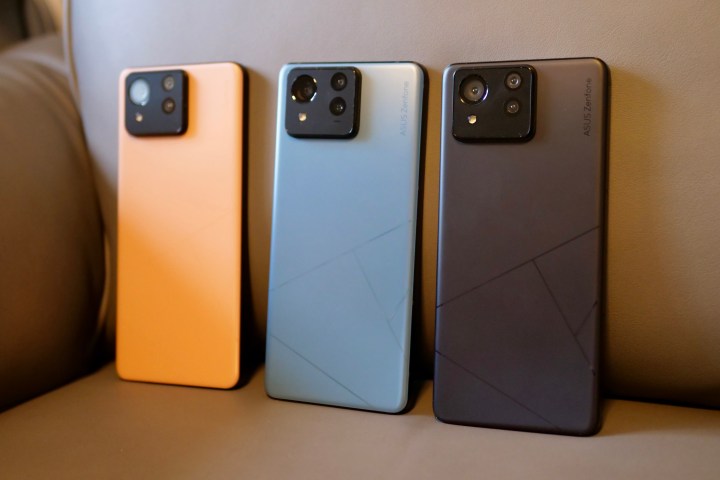
It’s worth addressing all the confusion first. For a while, Asus has embraced the “compact smartphone” market with its Zenfone range, giving those who want a high-performance, small Android phone a choice, rather than just buying the Samsung Galaxy S24 or Apple iPhone 15. The Asus Zenfone 10 is still that phone, and it continues on in Asus’s range, but it lags behind the Galaxy S24 in outright power as it’s a device from mid-2023.
Asus has decided not to announce a compact Zenfone 11 to replace it, making the Zenfone 11 Ultra the only phone in its 2024 Zenfone family. Here’s where problems arise, as we’ve become accustomed to an “Ultra” name indicating the manufacturer has thrown everything at the device to make it stand out — see the Galaxy S24 Ultra and the Xiaomi 14 Ultra for evidence — but Asus hasn’t done that with the Zenfone 11 Ultra. Why? Probably because the ROG Phone 8 Pro exists.
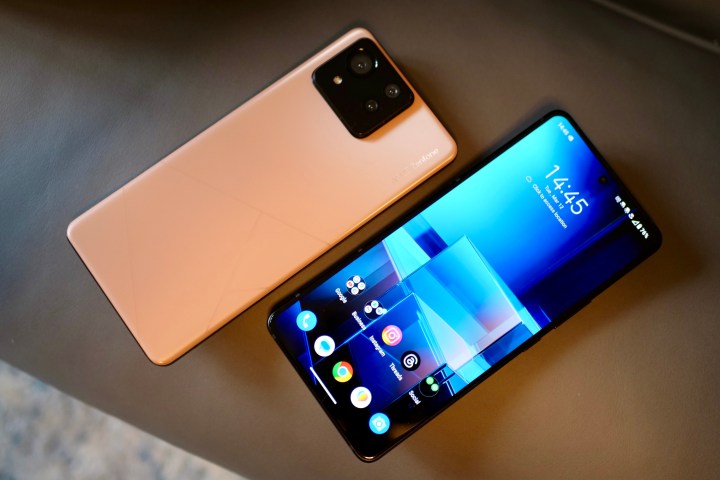
Asus’s gaming smartphone is a feature-packed powerhouse, while the Zenfone 11 Ultra is just a powerhouse. There is nothing Ultra about it, aside from having a big screen, and because that’s not unusual these days, it feels very underwhelming. The Zenfone 10 has a place in the market and a specific audience in mind, while the Zenfone 11 Ultra doesn’t seem to have either. When the Galaxy S24 Plus and the iPhone 15 Plus already occupy a somewhat awkward space, going with the similar Zenfone 11 Ultra instead of a small phone is an unusual decision from Asus.
The Asus Zenfone 11 Ultra is too ordinary
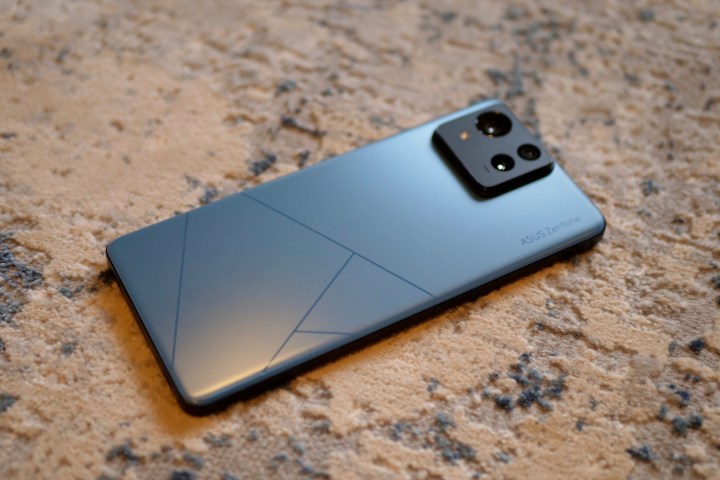
The Zenfone 11 Ultra is a simple, chunky smartphone made of metal and glass, and there’s nothing subtle about the 8.9mm thickness or 224-gram weight. There are large phones that have been thoughtfully shaped to make general use comfortable, such as the Samsung Galaxy S24 Ultra, but the Zenfone 11 Ultra is not one of them. You always know it’s in your pocket, and it’s practically impossible to use with one hand. I like to take my time browsing social networks or Chrome, and the Zenfone 11 Ultra makes this an arduous task after a while due to its slab sides and big dimensions.
There are four colors — Skyline Blue, Eternal Black, Misty Grey, and Desert Sand — and I implore you to get one of the brighter ones, as the rear panel is rather dull otherwise. There is the hint of Asus’s stylized A logo, but in some lights, the slim, polished line just disappears, making it an expanse of nothingness. The big, black, thick, square camera module is far too ordinary to add much to the look of the phone. If you crave subtlety and want nothing else than to disappear in a crowd, the black Zenfone 11 Ultra will be the phone for you.
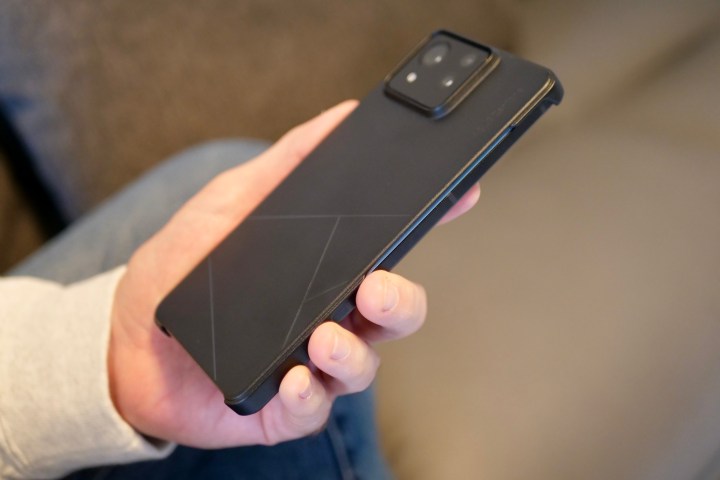
The IP68 water and dust resistance is welcome, especially as on the bottom of the frame is an offset USB-C charging port and the surprise addition of a 3.5mm headphone jack. It’s another aspect of Asus’s continued support of almost every audio feature and codec out there, ranging from Qualcomm Snapdragon Sound and AptX Adaptive to wired and wireless Hi-Res support. Stereo speakers with Dirac tuning complete the package and sound incredible, full of life, clarity, and depth.
The excellent audio can’t save the Asus Zenfone 11 Ultra from otherwise being unremarkable, and that’s a problem when various other competing phones are not ordinary at all, including one made by Asus itself.
Does it have Ultra performance?
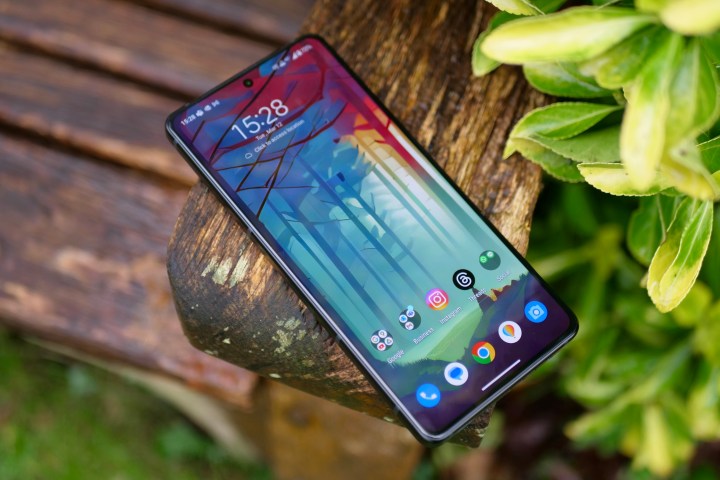
If it’s going to slap the word Ultra in the name, Asus needs to back it up by giving the Zenfone 11 Ultra some impressive performance. The screen is a 6.78-inch flexible LTPO AMOLED made by Samsung, so it adjusts between 1Hz and 120Hz to maximize battery life and can boost to 144Hz for some games. It has a peak brightness of 2,500 nits and will normally operate at a maximum of 1,600 nits in sunlight. Gorilla Glass Victus 2 protects it from harm. The screen is a beauty and great for games and video.
The Qualcomm Snapdragon 8 Gen 3 processor with up to 16GB of RAM and 512GB of storage space powers the phone, and a 5,500mAh battery provides the energy. A charger does not come in the box, but you do get a USB-C to USB-C cable. The Zenfone 11 Ultra has both 15W wireless charging and wired fast charging. This supports the PD3.0 PPS standard despite being labeled as Asus’s proprietary-sounding 65W HyperCharge system. I used an Asker 313 GaN charger rated at 45W to charge the Zenfone 11 Ultra, and it went from 2% to 100% in 45 minutes. Battery life is excellent at about five hours of hard use from a single charge, but light use of less than three hours a day will see it last for two to three days.
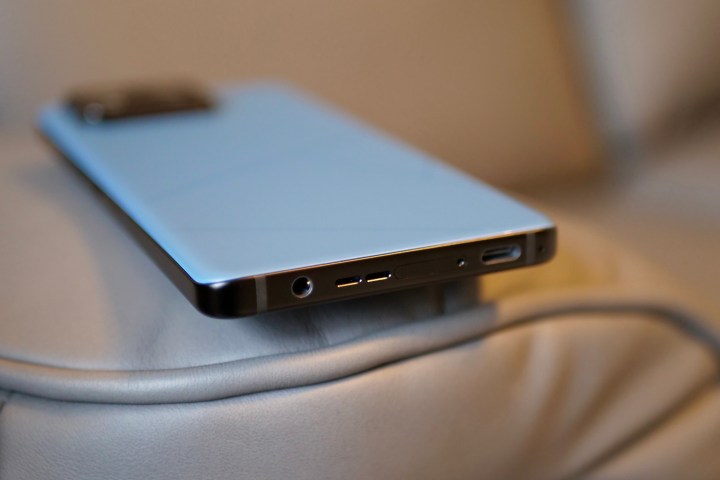
All this matches the Asus ROG Phone 8 Pro, but Asus says the Zenfone 11 Ultra is tuned differently to the ROG Phone 8 Pro and is less about performance than its gaming cousin. This didn’t sound right at all, and also not something reflected by the battery life and efficiency. Under general use, the Zenfone 11 Ultra’s software flies, just as you would expect, and I haven’t noticed any slowdown, jerkiness, or hesitation in apps. It’s the flawless, smooth, and stress-free user experience you want from a phone like this.
Performance tests using the 3DMark benchmarking app revealed almost no difference between it and the ROG Phone, and both maintained a similar temperature and frame rate during the extreme 20-minute tests, too. I played Asphalt 9: Legends on both and noticed no difference. However, the ROG Phone 8 Pro does have extra features — the AirTriggers, X Mode, and its side-mounted USB-C port, for example — that make it great for hardcore mobile gamers, which the Zenfone 11 Ultra does not have. Outside of that, it doesn’t seem to be tuned differently at all.
Will the camera worry other Ultra phones?
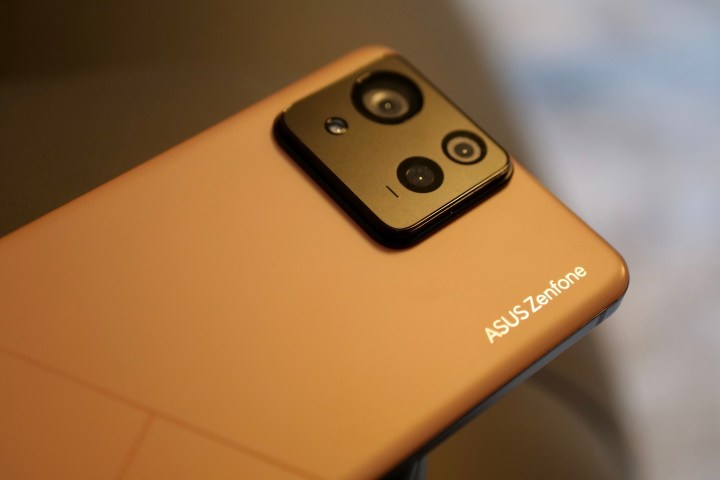
The camera module on the Asus Zenfone 11 Ultra contains a 50-megapixel IMX890 camera with Asus’s 6-axis Hybrid Gimbal Stabilizer, a 13MP wide-angle camera, and a 32MP telephoto for 3x optical zoom shots. This is all exactly the same as the ROG Phone 8 Pro, right down to the 32MP selfie camera. When the camera system is called Pro one minute and Ultra the next, you can probably work out that the Zenfone 11 Ultra will not be troubling the Galaxy S24 Ultra when it comes to taking photos.
Don’t write it off, though. The Zenfone 11 Ultra takes good photos, and while it’s not going to take any grand prizes, it won’t disappoint you when you use it. Photos can be fun and vibrant, white balance is effective, and the gimbal seems to help with lowlight images as nighttime photos are balanced and sharp. Look closely, and you can see noise and haloing. Switching between the main and wide-angle camera shows there isn’t much consistency, with the wide shots being far more saturated than the main camera.
- 1.
Asus Zenfone 11 Ultra main camera - 2.
Asus ROG Phone 8 Pro main camera - 3.
Asus Zenfone 11 Ultra wide-angle camera - 4.
Asus ROG Phone 8 Pro wide-angle camera
The gimbal is used to stabilize video, and there’s a new Super HyperSteady feature, but this didn’t seem to be active on my review device at the time of testing. The standard HyperSteady feature is only available at FHD resolution and 60fps, while the Adaptive stabilization works up to 8K resolution. The Zenfone 11 Ultra’s camera is decent enough, but the photos it takes are identical to the ROG Phone 8 Pro, which is an odd situation. I don’t know how I feel about the non-gaming phone’s Ultra camera taking the same photos as the Pro gaming phone.
Is the Zenfone 11 Ultra a good phone?

Asus has nailed smartphone software, providing a generally clean and logical interface over the top of Android and offering a few subtle enhancements — for example, an alternative volume menu, a split Quick Settings view, and a different look to the incoming call screen — that can be manually activated if you want them. It’s all built around Android 14 on the Zenfone 11 Ultra, and the general software use is one of the best parts of the phone. It’s not exciting, but you buy the ROG Phone 8 Pro if you want the option of a flashy interface as well.
But wait, there is some AI to jazz it up! In what is rapidly becoming one of the least interesting “feature” sets on 2024 phones, AI modes like AI Transcript, AI Noise Reduction, and AI Call Translator are all onboard for your enjoyment. The noise reduction for calls seems to work well, and I’ve left it active throughout my time with the phone, but I have not found any use for the other features yet. This is a problem with AI on other phones and not exclusive to the Zenfone 11 Ultra.
One other new feature is Video Genie, which is found through the Edge Tool and allows you to toggle off calls and notifications quickly or to minimize them when you’re watching a video, plus activate a background listening mode to keep videos active when you’re using other apps. There’s also Asus’s GlideX feature, which mirrors your phone to your PC, transfers files, and uses the phone’s camera as a webcam. There’s no X Mode like the ROG Phone 8 Pro, but you get the Game Genie software to boost in-game performance.
Reliable and easy to use, the Zenfone 11 Ultra is a very good everyday phone, but even so, this isn’t something to shout about. Every current flagship phone provides a very similar experience, and unfortunately, Asus loses points for only offering two Android version updates and four years of security updates. This is far behind Samsung, Google, and OnePlus.
Asus Zenfone 11 Ultra price and availability

Available from March 14, the Asus Zenfone 11 Ultra with 12GB of RAM and 256GB of storage space costs $899, or $949 with 16GB of RAM and 512GB of storage space. In the U.K., the phone costs 869 British pounds for the standard model or 949 pounds for the higher-spec version.
While not overpriced, the Zenfone 11 Ultra is a very hard sell due to the massive amount of competition around it. The 16GB/512GB OnePlus 12 is $900, and the Google Pixel 8 Pro is $999, as is the Samsung Galaxy S24 Plus. Sure, the $1,299 Galaxy S24 Ultra is much more expensive, but its kitchen sink spec and feature list justify much of it. The Asus ROG Phone 8 Pro costs $1,099 (and is actually on offer for $999 at the time of writing) and is considerably more interesting.

More problematic for Asus are the cheaper phones that have impressed recently. I enjoyed using the Nothing Phone 2a a lot more than the Zenfone 11 Ultra, the OnePlus 12R has won plenty of fans, and the Google Pixel 8 remains the pick of the latest Pixel phones. You’ll save money and arguably get more enjoyment if you choose one of these phones over the Zenfone 11 Ultra, just provided you don’t want the outright power and performance from the Snapdragon 8 Gen 3 chip.
Why should you buy the Zenfone 11 Ultra?
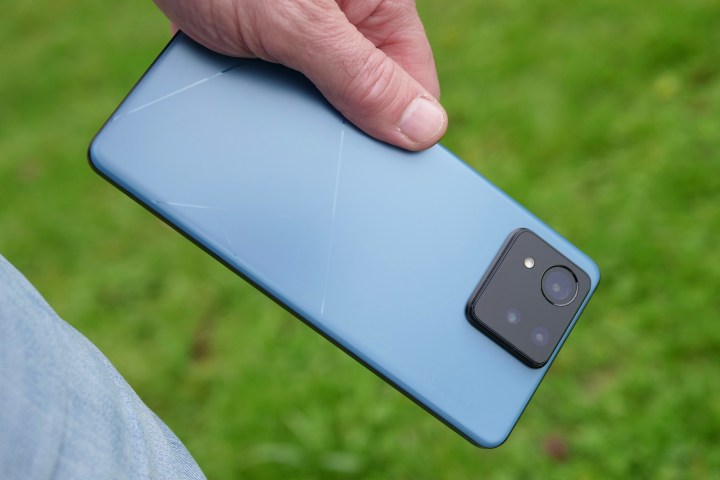
I have no idea why you would really want to buy the Asus Zenfone 11 Ultra. I like Asus phones and usually take pleasure in recommending them, but in this instance, I genuinely think you should just buy the ROG Phone 8 Pro with its toned-down (but still cool) design and unobtrusive but useful gaming features. It’s the Zenfone 11 Ultra, just more interesting.
But if you never play games, it would be a waste, and the trouble in this situation is the Zenfone 11 Ultra’s competitors are all much more compelling, often better looking, and come with longer software update commitments. Sadly, Asus hasn’t given you a real reason to buy the Zenfone 11 Ultra over them and has simply stripped back all the bits that make the ROG Phone 8 Pro fun and exciting to leave a rather forgettable phone. At least a small Zenfone 11, should it have been made, would have something unusual about it.
I’ll close by saying that I have experienced no problems with the Zenfone 11 Ultra. Everything works exactly as you’d expect, and the build quality is excellent. It’s a perfectly acceptable smartphone, but a big screen and the latest chip aren’t really enough to get a strong recommendation these days — especially when the competition is going out of its way to do all this and more.
Editors’ Recommendations

